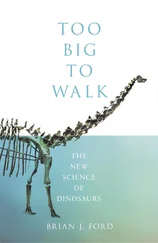Always Be Stopping
I expect to pass through this world but once. Any good therefore that I can do, or any kindness that I can show to any fellow creature, let me do it now. Let me not defer or neglect it, for I shall not pass this way again.
—STEPHEN GRELLET
Spend the afternoon. You can’t take it with you.
—ANNIE DILLARD
We’ve looked at specific cases of people confronting stopping problems in their lives, and it’s clear that most of us encounter these kinds of problems, in one form or another, daily. Whether it involves secretaries, fiancé(e)s, or apartments, life is full of optimal stopping. So the irresistible question is whether—by evolution or education or intuition—we actually do follow the best strategies.
At first glance, the answer is no. About a dozen studies have produced the same result: people tend to stop early, leaving better applicants unseen. To get a better sense for these findings, we talked to UC Riverside’s Amnon Rapoport, who has been running optimal stopping experiments in the laboratory for more than forty years.
The study that most closely follows the classical secretary problem was run in the 1990s by Rapoport and his collaborator Darryl Seale. In this study people went through numerous repetitions of the secretary problem, with either 40 or 80 applicants each time. The overall rate at which people found the best possible applicant was pretty good: about 31%, not far from the optimal 37%. Most people acted in a way that was consistent with the Look-Then-Leap Rule, but they leapt sooner than they should have more than four-fifths of the time.
Rapoport told us that he keeps this in mind when solving optimal stopping problems in his own life. In searching for an apartment, for instance, he fights his own urge to commit quickly. “Despite the fact that by nature I am very impatient and I want to take the first apartment, I try to control myself!”
But that impatience suggests another consideration that isn’t taken into account in the classical secretary problem: the role of time. After all, the whole time you’re searching for a secretary, you don’t have a secretary. What’s more, you’re spending the day conducting interviews instead of getting your own work done.
This type of cost offers a potential explanation for why people stop early when solving a secretary problem in the lab. Seale and Rapoport showed that if the cost of seeing each applicant is imagined to be, for instance, 1% of the value of finding the best secretary, then the optimal strategy would perfectly align with where people actually switched from looking to leaping in their experiment.
The mystery is that in Seale and Rapoport’s study, there wasn’t a cost for search. So why might people in the laboratory be acting like there was one?
Because for people there’s always a time cost. It doesn’t come from the design of the experiment. It comes from people’s lives.
The “endogenous” time costs of searching, which aren’t usually captured by optimal stopping models, might thus provide an explanation for why human decision-making routinely diverges from the prescriptions of those models. As optimal stopping researcher Neil Bearden puts it, “After searching for a while, we humans just tend to get bored. It’s not irrational to get bored, but it’s hard to model that rigorously.”
But this doesn’t make optimal stopping problems less important; it actually makes them more important, because the flow of time turns all decision-making into optimal stopping.
“The theory of optimal stopping is concerned with the problem of choosing a time to take a given action,” opens the definitive textbook on optimal stopping, and it’s hard to think of a more concise description of the human condition. We decide the right time to buy stocks and the right time to sell them, sure; but also the right time to open the bottle of wine we’ve been keeping around for a special occasion, the right moment to interrupt someone, the right moment to kiss them.
Viewed this way, the secretary problem’s most fundamental yet most unbelievable assumption—its strict seriality, its inexorable one-way march—is revealed to be the nature of time itself. As such, the explicit premise of the optimal stopping problem is the implicit premise of what it is to be alive. It’s this that forces us to decide based on possibilities we’ve not yet seen, this that forces us to embrace high rates of failure even when acting optimally. No choice recurs. We may get similar choices again, but never that exact one. Hesitation—inaction—is just as irrevocable as action. What the motorist, locked on the one-way road, is to space, we are to the fourth dimension: we truly pass this way but once.
Intuitively, we think that rational decision-making means exhaustively enumerating our options, weighing each one carefully, and then selecting the best. But in practice, when the clock—or the ticker—is ticking, few aspects of decision-making (or of thinking more generally) are as important as one: when to stop.
*We use boldface to indicate the algorithms that appear throughout the book.
*With this strategy we have a 33% risk of dismissing the best applicant and a 16% risk of never meeting her. To elaborate, there are exactly six possible orderings of the three applicants: 1-2-3, 1-3-2, 2-1-3, 2-3-1, 3-1-2, and 3-2-1. The strategy of looking at the first applicant and then leaping for whoever surpasses her will succeed in three of the six cases (2-1-3, 2-3-1, 3-1-2) and will fail in the other three—twice by being overly choosy (1-2-3, 1-3-2) and once by not being choosy enough (3-2-1).
*Just a hair under 37%, actually. To be precise, the mathematically optimal proportion of applicants to look at is 1/e—the same mathematical constant e, equivalent to 2.71828…, that shows up in calculations of compound interest. But you don’t need to worry about knowing e to twelve decimal places: anything between 35% and 40% provides a success rate extremely close to the maximum. For more of the mathematical details, see the notes at the end of the book.
*More on the computational perils of game theory in chapter 11.
Конец ознакомительного фрагмента.
Текст предоставлен ООО «ЛитРес».
Прочитайте эту книгу целиком, купив полную легальную версию на ЛитРес.
Безопасно оплатить книгу можно банковской картой Visa, MasterCard, Maestro, со счета мобильного телефона, с платежного терминала, в салоне МТС или Связной, через PayPal, WebMoney, Яндекс.Деньги, QIWI Кошелек, бонусными картами или другим удобным Вам способом.






![Владстон Феррейра Фило - Теоретический минимум по Computer Science [Все что нужно программисту и разработчику]](/books/389524/vladston-ferrejra-filo-teoreticheskij-minimum-po-co-thumb.webp)



